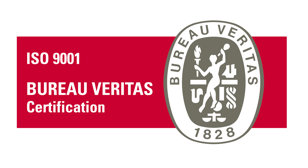Article

PACTE law: a stronger French Patent Procedure
In 2019, a series of new laws came into force with the goal of strengthening the French economy. These new laws bear the name PACTE law, an acronym for “Plan d'action pour la croissance et la transformation des entreprises” (Action plan for business growth and transformation). All areas of the law are concerned, namely business law, social law, but also patent law. Some of the measures of PACTE aim to simplify the creation of a company or promote the rebound of companies in the event of failure. Other touch the question of the place of business in society or make it easier to invest in the real economy.
Of interest here are the substantial changes to the patent law that PACTE brought: the adoption of the examination of the inventive step for patent applications, the adoption of an opposition procedure, the possibility to file of a provisional application, and some changes to the certificate of utility. These measures are seen as new tools helping the business strengthen their assets.
While PACTE came as a bundle of laws, each of the changes has a different time of entry into force.
| May 22, 2019 | Promulgation of the PACTE law |
| May 23, 2019 | Entry into force of the limitation period for invalidity & infringement actions |
| January 10, 2020 | Lengthening of validity period for utility certificates |
| January 11, 2020 | Possibility to transform a utility certificate into a patent application |
| April 1, 2020 | Possibility to form opposition to a French patent |
| May 22, 2020 | Examination of the inventive step |
| July 1, 2020 | Possibility of filing a provisional patent application |
PACTE law changes at the patent application examination level
Adoption of the examination of the inventive step (source L612-2 CPI)
- Introduction of an inventive step criterion at the examination stage
Up to May 22, 2020, patents were examined on novelty grounds, and rejection on lack of inventive step was not possible. Yet, for a French patent to be valid it had to be novel and inventive. This meant that the INPI developed only novelty rejections of patent applications, while French courts, when deciding on the validity of an issued patent, had to also consider inventive step. As a result, a jurisprudence was developed by the French courts on how to evaluate the inventiveness of a claimed invention.
By adopting the inventive step at the examination level, the French law makers aimed to enhance robustness of the patent system and provide legal security. They also aimed to harmonize their practice with the French courts, with other national offices and in with the European Patent Office.
The expected benefits of the adoption of the inventive step at the examination level are to increase transparency of the innovation and industry value of patents, and the possibility to approach financial institutions and business partners with irrefutable intangible assets.
- How did INPI prepare for this change?
The examination of the inventive step isn’t in itself a totally new procedure at the INPI. Even though the examiners couldn’t formally reject an application for lack of inventive step before the adoption of PACTE, they still could lay out an inventive step argumentation in the office actions. Some of the examiners, even before PACTE, had training in European law (and hence problem solution approach arguments), attended CEIPI school in Strasbourg, or went in training at the EPO.
In order to harmonize and enhance the quality of the examination, INPI put in place internally an office-wide training scheme with practical examples and templates drafting. A task force was created to train the examiners at approaching the inventive step with the same view (problem-solution) and at the same strictness of examination. In addition, INPI increased the number of examiners, reaching now 130 examiners.
INPI has issued new guidelines for inventive step (including a version in English) that substantially resembles to the EPO ones. The problem-solution approach is clearly described as the standard for evaluation the inventive step of a claimed invention. INPI aims to have a strong examination like the EPO. As a result, the French guidelines are quite similar with the European ones.
Introducing the provisional application (source R612-3-1 & 2, R612-5 CPI)
A new type of filing is now available at the French patent office: the provisional application. Unlike the US where the provisional application is a type of application in itself, the French provisional application is a state of an application.
When filing a French patent application, the applicant indicates that the state is of “provisional” (“provisoire”). Based on this status, the applicant has 12 months to complete the application with: claims, abstract, and official search fees. The only official fee due at filing, or within 1 month thereof, is a filing fee of 26 euros (13 euros for small entities).
At the end of the 12 months, should the actions to complete the application not be performed, the application becomes abandoned and never published. On the contrary, if within the 12 months of the filing of the provisional application, the applicant requests in writing that the provisional application be brought into conformity and performs the required acts listed above, it will become a regular application. The applicant may alternatively request the transformation of the provisional application into a utility certificate.
The goal of the newly introduced provisional status is to make it possible to file at the INPI at a lower cost and with a minimum of formalities.
However, be mindful that if the applicant files a provisional application without claims, it will be bound by its disclosure only. Since the provisional is a status of an application, no added matter is allowed at the end of 12 months period for bringing the application into conformity. In addition, the provisional application does not prepare for filings abroad since at the end of the priority period the search report has not been issued yet and the applicant therefore does not have information on the patentability of his invention (in contrast with a regular patent filing which allows a search report to de drawn within about 9 months of filing).
Occasions to amend during the French prosecution
Upon filing, the applicant will have three occasions to amend its claims before being finally rejected. First, upon receiving the French search report and opinion (in French “Rapport de recherche préliminaire”), a window of 3 months opens for a response with possible amendments. This window may be extended once for another 3 months. The search report and opinion will be drafted by an EPO examiner if the French filing is a first filing, or if it is a filing under priority (for example, under a Chinese priority), an INPI examiner will draft the search report and opinion.
Should the examiner still have a rejection, he/she will then issue a first office action named “mise en demeure”. The deadline to respond (with possible amendments) is of 2 months, no extension possible. Be mindful that the deadline to respond is rather short, especially for a foreign applicant.
Should the examiner still not be convinced, he/she will provide a last chance to the applicant to amend, with a notification named “rejection project” (“projet de rejet”). A non-extendable 2 months is given to the applicant for putting the application in condition for allowance.
If the application isn’t in condition for allowance, the application is formally rejected (“rejet”). There is a possibility of appeal. Interestingly, appeal in France isn’t in front of the INPI but at the court (“cour d’appel”).
Key points to remember for the French patent prosecution is that there is no oral hearing like at the EPO, that there are three separate occasions to amend the application before a final rejection, yet after the first occasion, the deadlines to respond are rather short.
Adoption of an opposition procedure (source L613-23 & 24 CPI)
Before PACTE law, the only way to invalidate a patent was to file a nullity action in front of the French courts.
As of April 1, 2020, all issued patents may be subject to an opposition. The time limit for filing an opposition is within 9 months of the date of publication of the notice of grant of the patent. The time limit and overall proceeding of the French opposition is similar to the European one. However, the cost of filing an opposition in France is low (official fee of 600 euros), and there is no provision that allows an alleged infringer to intervene in opposition proceedings (unlike in Europe).
Opposition applies to French patents only, not to European patents that have been validated in France, and may be formed on the grounds of: exclusions from patentability, lack of novelty, inventive step or industrial application, insufficiency of description, extension of the subject-matter beyond the content of the application as filed or, where the patent has been granted on the basis of a divisional application, beyond the content of the initial application as filed.
A few key points on the French opposition procedure:
- Unlike at the EPO, INPI won’t conduct or continue an opposition proceeding if all parties have withdrawn, and the INPI can’t bring up an opposition ground not raised by any of the parties.
- Patentees and opponents are allowed to apply for a stay of proceedings so that they can negotiate a settlement of their case.
- Appeal of the decision is in front the of French courts. Unlike at the EPO, there is no board of appeal at the INPI.
Utility Certificate (source L611-2, L612-15 CPI)
A French utility certificate is the equivalent of a utility model or petty patent in some foreign jurisdictions. The utility certificate is a “light patent”, not examined on the merits, but for which an infringement action may be conducted if, after grant, a search report by the INPI is produced.
Thanks to PACTE law, the term of protection for utility certificates has been extended from 6 to 10 years. Another key point brought by PACTE, is that a bridge is now possible from the utility certificate to the patent application, that is: any utility certificate may be converted into a patent application if a request to do so is presented before publication of the application (in most cases the 18 months deadline). Before PACTE, the only conversion possible was from a patent application into a utility certificate.
Thanks to this new tool, it is possible to defer examination of the patent application by first filing a utility certificate (for which by definition there is no examination on the merits), and subsequently transforming it into a patent application, which initiates the examination of the application.
The utility certificate may be of interest for inventions that have a short life cycle.
Prescription (source L615-8, L615-8-1 CPI)
Invalidation actions
Before PACTE law, the French patent code did not have any provision on a prescription of the nullity action. Courts applied the provisions of article 2224 of the Civil Code, stating that a 5-year period begins "from the day on which the holder of a right knew or should have known the facts enabling it to exercise it ”.
PACTE changed this to state that patent invalidity actions are not subject to any statute of limitations. As a result, there is no prescription to initiate a nullity action in France.
Indignement actions
PACTE law also modified the starting point of the prescription period of 5 years for infringement actions "from the facts which are the cause" (that is to say from the date of realization of the acts of counterfeiting), to "from the day on which the holder of a right knew or should have known of the last fact enabling him to exercise it".
Conclusion
The series of changes to the patent law introduced by PACTE law results in a coherent set of provisions between a stronger national patent and an opposition procedure, as well as a longer utility certificate convertible within a certain period into a patent application.
INPI has increased its training and strengthened its procedure to provide the applicant with a strong national examination of its patents.
With the PACTE law, the examination procedure of the INPI tends to approach that of the EPO, with fees nevertheless much lower than those of the EPO.






























